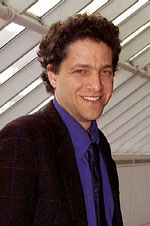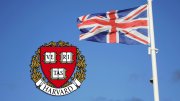 |
| Laurel Thatcher Ulrich |
| Stephanie Mitchell/ Harvard News Office |
President Lawrence H. Summers appointed two utterly different historians, both members of the Faculty of Arts and Sciences, to University Professorships, Harvard’s most distinguished chairs, on January 24. Laurel Thatcher Ulrich, currently Phillips professor of early American history, becomes the 300th Anniversary University Professor, succeeding president emeritus Derek C. Bok. Ulrich, author of the Pulitzer Prize-winning A Midwife’s Tale and editor of Yards and Gates: Gender in Harvard and Radcliffe History, has recently studied both women’s history and early American material culture (see "Harvard's Womanless History," November-December 1999, and "A Woodsplint Basket," March-April 2002). She directs Harvard’s Charles Warren Center for Studies in American History.
 |
| Peter Galison |
| Justin Ide/ Harvard News Office |
Mallinckrodt professor of the history of science and of physics Peter Galison has been named Pellegrino University Professor, succeeding biologist E.O. Wilson. Galison explores the intersection of experimentation, instrumentation, and theory, particularly in twentieth-century physics. His books include Image and Logic: A Material Culture of Microphysics and Einstein’s Clocks, Poincaré’s Maps, and he also works in film (see “The Early Days of the H-Bomb,” September-October 2001, page 14, and “Cinema Veritas,” November-December 2005, page 34).
Both professors have been MacArthur Foundation Fellows. Both offer Core courses, and were named Harvard College Professors, for excellence in teaching, in 2001.





